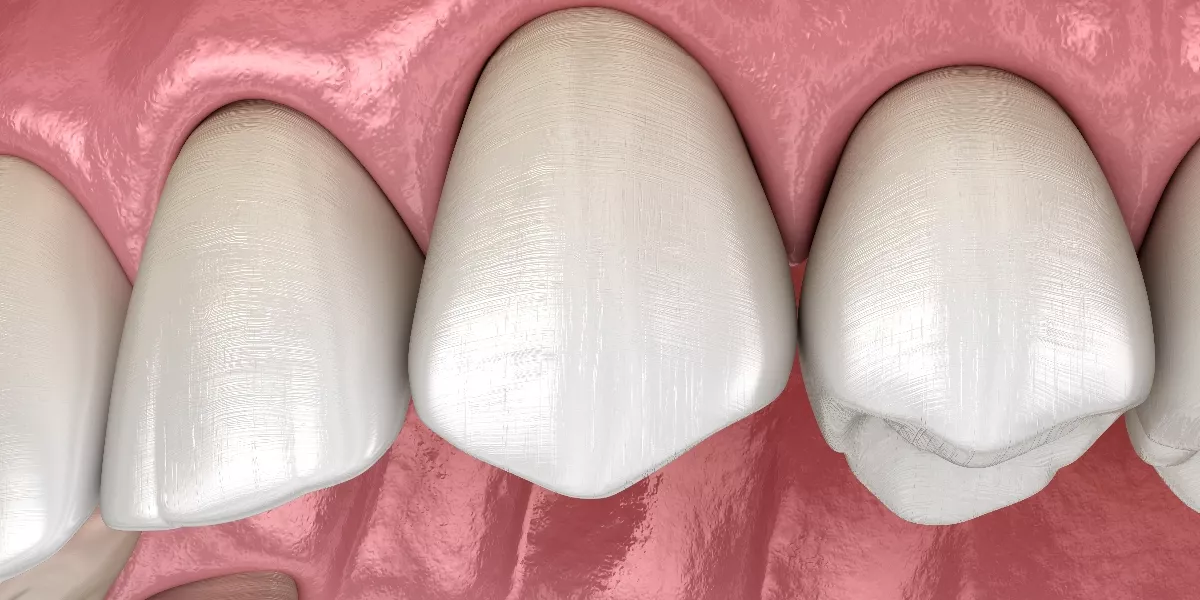Do you have a missing canine tooth, or one that hasn’t erupted properly? You may be dealing with an impacted canine, a condition where the tooth remains trapped beneath the gum tissue. While not uncommon, impacted canines can lead to various oral health concerns if left untreated.
What is an Impacted Canine?
An impacted canine is a permanent tooth that fails to erupt through the gums and into its proper position within the dental arch. This can occur for various reasons, including lack of space in the jaw, abnormal tooth development, or other dental abnormalities.
Prevalence and Significance
Impacted canines are relatively common, affecting approximately 2-3% of the population. While the absence of a visible canine may not seem like a major issue, it can have significant consequences for your oral health, including:
- Crowded teeth: Impacted canines can crowd surrounding teeth, leading to misalignment and difficulty cleaning.
- Gum disease: Improperly positioned teeth are more susceptible to plaque buildup and gum inflammation.
- Cyst formation: In some cases, an impacted canine can form a cyst around it, which can damage surrounding bone and teeth.
- Pain and discomfort: Impacted canines can cause pain and pressure, especially during eruption.
Treatment Options
Fortunately, impacted canines can be treated and brought into their proper position. The most common treatment involves:
- Surgical exposure: During this procedure, the impacted tooth is uncovered through a small incision in the gum tissue.
- Orthodontic treatment: Once exposed, the canine is gradually guided into its proper place using braces or other orthodontic appliances.
Don’t let an impacted canine hold you back from achieving a healthy, confident smile. Please contact our Tewksbury or our Portsmouth office to schedule your consultation today.
What Causes Impacted Canines?
The eruption of a canine tooth through the gums involves a complex interplay of factors. When this process goes awry, the canine can become trapped, leading to the condition known as impaction. While the exact cause is often difficult to pinpoint, several contributing factors can play a role:
Congenital factors:
- Abnormal tooth development: Sometimes, the canine itself may develop incorrectly, with abnormal crown or root shapes hindering its eruption path.
- Extra teeth: The presence of extra teeth, either in the vicinity of the canine or elsewhere in the jawbone, can occupy space and block the eruption pathway.
- Impacted incisor or premolar: If another tooth in the same area, like a neighboring incisor or premolar, is also impacted, it can create a physical barrier preventing the canine from erupting.
Acquired factors:
- Trauma to the jawbone: Injuries to the jawbone can damage the surrounding tissues and disrupt the eruption process.
- Cysts or tumors: The formation of cysts or tumors in the jawbone can create physical barriers or disrupt the normal development of the tooth.
- Inadequate space in the dental arch: In some cases, the jawbone simply lacks sufficient space to accommodate all the teeth, leading to crowding and impaction.
- Early loss of baby teeth: Premature loss of baby teeth can leave a gap that neighboring teeth may shift into, ultimately hindering the eruption path of the permanent canine.
- Crowded teeth: Existing crowding of teeth in the dental arch can put pressure on the canine and prevent it from erupting properly.
Understanding the potential causes of impacted canines is crucial for both early diagnosis and selecting the most appropriate treatment approach. By addressing the underlying factors, we can help guide the impacted tooth into its correct position and restore a healthy, functional smile.
How are Impacted Canines Diagnosed?
Early diagnosis of impacted canines is crucial for preventing complications and ensuring successful treatment. Here’s how dental professionals identify this condition:
Clinical Examination:
- A thorough clinical examination by your dentist is the first step. They will visually inspect your mouth and gums, looking for any signs of an unerupted canine, such as swelling, bumps, or misaligned teeth.
- They will also inquire about your dental history, including information about any missing teeth, previous orthodontic treatment, or jawbone injuries.
Imaging Tests:
- Panoramic X-ray: This provides a wide-angle view of the entire jawbone and teeth, allowing the dentist to locate the impacted canine and assess its position, angulation, and relationship to surrounding structures.
- CT scan: In some cases, a CT scan may be needed to obtain a more detailed 3D image of the impacted canine and the surrounding bone. This can be particularly helpful for complex cases or when planning surgical exposure.
Additional Tests:
- In rare cases, additional tests like cone beam computed tomography (CBCT) or dental models may be used for further evaluation.
Combining these methods allows for an accurate diagnosis of the impaction and we can make informed decisions about the appropriate treatment plan.
Remember, early diagnosis is key. If you suspect you or your child may have an impacted canine, schedule a consultation with your dentist. Prompt diagnosis and treatment can prevent complications and ensure a successful outcome.
Impacted Canine Treatment Options
Impacted canines can be a frustrating and concerning issue, but fortunately, there are effective treatment options available. The best approach for you will depend on various factors, such as the severity of the canine’s impaction, the age of the patient, and the overall condition of your dental health.
Here’s an overview of the most common treatment options for impacted canines:
Observation:
- Description: In some cases, particularly for mildly impacted canines in young patients, observation may be the recommended approach.
- Purpose: This allows monitoring the tooth’s development and potential eruption without immediate intervention.
- Benefits: Avoids unnecessary surgery and orthodontic treatment.
- Drawbacks: The impacted canine may remain unerupted, leading to future complications.
Surgical Exposure and Orthodontic Treatment:
- Description: This is the most common treatment option for impacted canines. It involves two stages:
- Surgical exposure: A small incision is made in the gum tissue to expose the impacted tooth.
- Orthodontic treatment: Braces or other appliances are used to gradually guide the tooth into its proper position within the dental arch.
- Purpose: Aligns the impacted tooth into its correct position, promoting optimal oral health and aesthetics.
- Benefits: Provides a functional and aesthetically pleasing smile.
- Drawbacks: Requires more time and commitment than other options.
Extraction:
- Description: This involves surgically removing the impacted canine tooth.
- Purpose: This may be the preferred option if the tooth is severely impacted, damaged, or poses a significant risk to neighboring teeth.
- Benefits: A quick and straightforward procedure.
- Drawbacks: Requires additional procedures like implants or bridges to replace the missing tooth. May affect the aesthetics and function of your smile.
Choosing the best treatment option for you requires careful consideration of your unique circumstances and a thorough discussion with an oral health specialist. They will evaluate the severity of the impaction, your dental health, and your individual preferences to recommend the most appropriate course of action.
Unlocking Your Smile with Expert Impacted Canine Treatment
At ASA Dental Implants & Oral Surgery, we understand the concerns and challenges associated with impacted canines. Our team of experienced oral surgeons provide personalized and effective treatment solutions.
Don’t let an impacted canine hold you back from achieving a healthy, confident smile. Please contact our Tewksbury or our Portsmouth office to schedule your consultation today.


